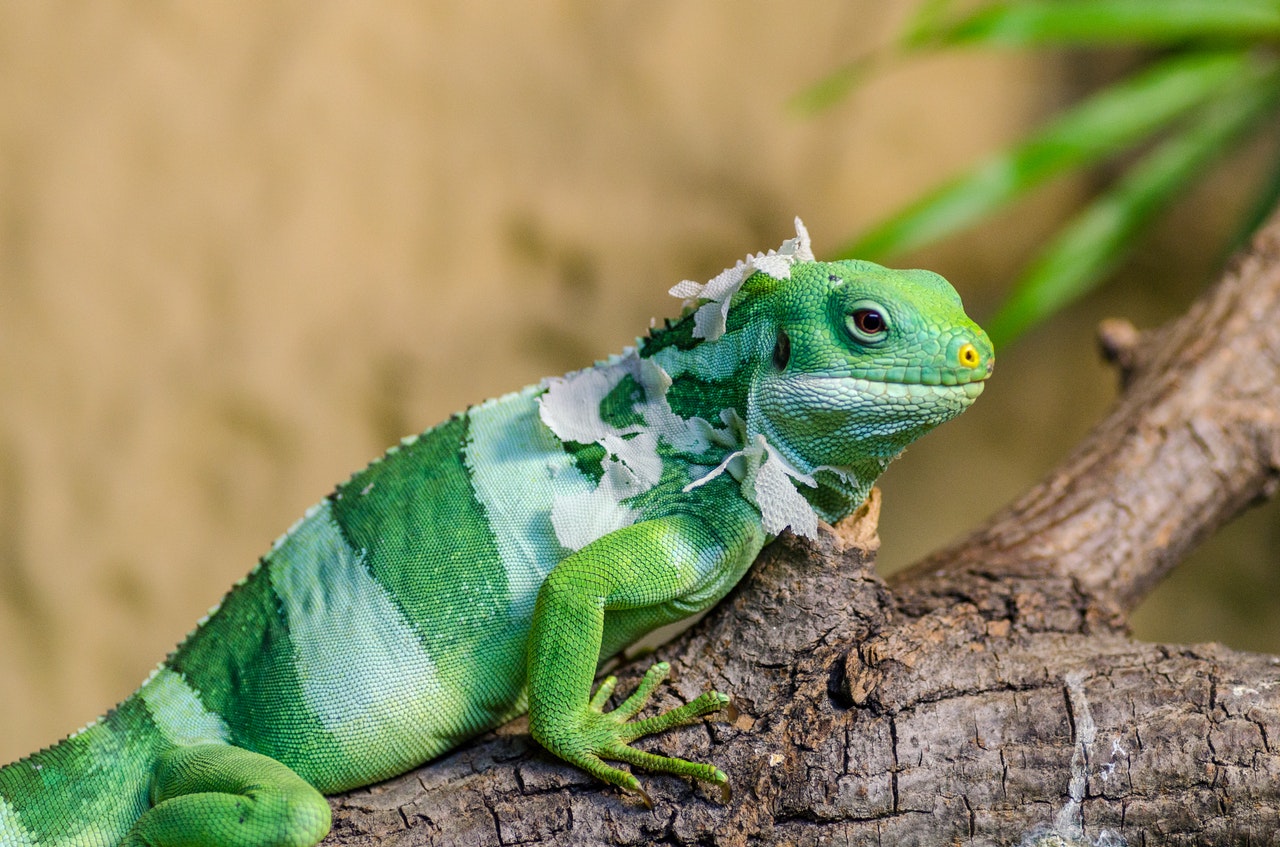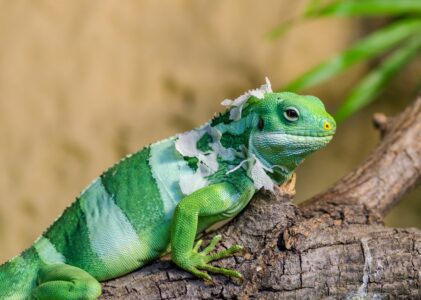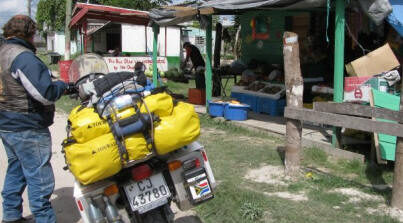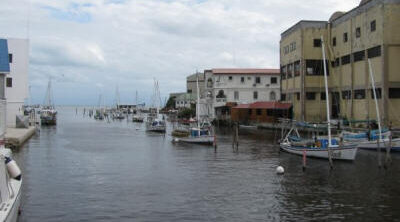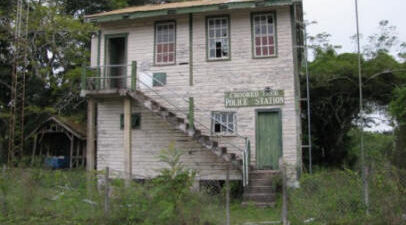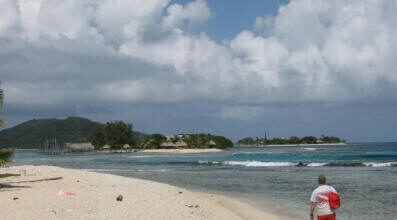Belize
26 Januarie 2009
Ons is in, en amper al weer uit, Belize. Die land is pragtig, maar klein. Die uitsondering is egter Belize City, wat ‘n riller is, maar ons het dit oorleef. Ons kamp by ‘n nice kampterein net buite Cayo, op die grens van Guatemala. Is nog nie seker hoe lank ons gaan bly nie, maar ons volgende stop is Tikal.
27 January 2009
We got to the Belize border and were greeted by very friendly immigration and customs officials all speaking English with the Jamaican accent. In no time we were on our way heading into the tropical country side. My first impression of the country was a bit tainted as there was quite a bit of litter along the roads – even more than Mexico! And the small villages that we drove past were in dire state for repair. When we got to Orange Walk, we stopped to buy some fruit to eat as a late breakfast. While sitting on the side of the road, eating sliced banana out of a half a papaya, we decided that the country was much smaller than we anticipated and it was still early enough in the day to head further down the road.
Crooked Tree is about 6km off the main highway and the road leads through a marshy area. The area is protected and is known as the Crooked Tree Wildlife Sanctuary because of all the water birds that come there to nest – a real birders paradise! After paying our entry fee at the visitor’s centre we headed to Rhaburn’s Rooms, a family run guest house. Owen and Maggie Rhaburn, both well-on in their years, have opened up the top floor of their family home as a guest house. It has four lovely rooms, a shared bathroom – with hot shower/bath, and a small sitting room and a balcony. It is in a huge garden with lots of lawn and big trees. We unloaded all our goodies in the room and then armed with the camera and binoculars we headed out into the sandy streets. Wow, what an awesome place to be visiting, we weren’t very far down the road when we started to see beautiful little birds with the brightest of colours; black with yellow or orange, black with dark red and dark pink, little humming birds and many more bigger birds…. groove-billed ani, tropical kingbird, lesser yellow-headed vulture, black-cowled oriole, black-headed trogan. The one area had a huge natural pond where we watched the snowy and great egrets, magnificent frigatebirds, grey necked wood-rail, black necked stilt, agami heron, blue heron, amazon kingfisher and other water birds catch fish and bugs. We heard so many different bird calls that it was hard to keep up with some of them as they flittered and fluttered in and out of the tree. There were also cows, chickens and horses roaming around – they all seemed to know which way was home at sunset. People riding bicycles or just walking down the streets, quaint wooden houses on stilts with huge open yards as most of the properties were without any fencing. We discovered that it was a very peaceful Jesus loving community. All too soon it was time to leave and Maggie asked us to pray for her as she is suffering terribly with rheumatoid arthritis. So please remember her in your prayers, she is a real frail little old lady with a heart for Jesus.
We headed into Belize City thinking that it would be an established city with good book shops so that we could buy a birding book and find an internet cafe. How wrong we were!! After a quick walk around the city looking for the book shops we decided that it was not a nice place to be in. There were too many people begging and taking chances, even kids riding around on bicycles would come and ask for money! Belize City was founded in the mid-17th century by British lumber harvesters and also became the home of the thousands of African slaves brought in by the British to assist in the forest industry. Many of the streets built from colonial days are still small and congested, a majority of houses are still susceptible to fireand damage from hurricanes. The city was almost entirely destroyed in 1961 when Hurricane Hattie swept ashore and I think that was the last time any maintenance has been done there. The place looks like a disaster area especially with all the litter lying around. The guest house we stayed in had secure parking for the GS and the bedding was clean but the rest of the place was a nightmare. After going downstairs to use the shared bathrooms, we both decided not to shower! The next day we headed out as soon as possible. The place could be an absolute gold mine as many of the cruise ships stop there to bring tourist to the Caye islands for diving! But all the tourists do is catch the nearest water taxi out to the islands.
We went to visit the Belize Zoo and Tropical Education Centre which is settled upon 29 acres of tropical savannah and exhibits over 125 animals all native to Belize. The zoo keeps animals which were either orphaned, born at the zoo, rehabilitated animals, or sent to The Belize Zoo as gifts from other zoological institutions. We got to see animals that we would normally never see as their natural habitat is deep in the jungle – jaguar, ocelot, the smelly tapir that almost sprayed pee on us, margay curled up high on thin branches in the trees sleeping, coati and the big harpy eagle to mention a few. It was well worth the visit and we spent about three hours walking around. As Belize is a small country, it did not take us long and we were getting closer to the Guatemala border and I must add that this southern part of the country seems to be the most beautiful part and thankfully also the cleaner part. We started to look for a place to stay in San Ignacio but we were not able to find a place with secure parking for the GS, so we headed out of town to one of the campsites. Praise the Lord; this was the first place that we found with wifi hallelujah. Wonderful lawn to camp on, full hook-ups for RV’s and warm showers! It just amazes me every time to see what little surprises the Lord has hidden for us the further we get down the road.
Flores, Guatemala
29 January 2009
We have been to Tikal, and we are in Flores for tonight. Tikal was amazing, so is Flores. We have met three other travellers, and will spend the night with them. Heading for Honduras tomorrow.
30 January 2009
Safely at Rolli’s Place, Omoa, Honduras. Heading to Tella today. Border crossing OK,jungle and birds are beautiful.
31 January 2009
Safely in Banana Republic Guest House, La Ceiba, Camped last night at La Union. Tella was not a nice Town! Honduras seems to be pretty jacked up.
La Ceiba
1 Februarie 2009
Laas nag heel nag gereen dat dit klap hier in La Ceiba. Gelukig was ons nie in ons tent nie, maar in ‘n Hostal, anders was ons sopnat. Laas nag het ons kerk musiek gehoor van oorkant die pad, en gaan kyk. Ons het die kerkdiens bygewoon, natuurlik nie die preek verstaan nie, maar die wysies van die musiek erken en saam gesing. Die landskap hier is pragtig. Jungle. Ek het nuwe fotos op Facebook en ‘n video op Youtube (Mexico 1).

4 Februarie 2009
Ons is nog steeds in La Ceiba (Honduras) Dis lekker hier en ons geniet dit baie. Ons het so bietjie toeriste dinge gedoen, was gister op ‘n ‘Canopy tour’ en vandag na die pragtige eilande toe. Kyk nuwe fotos op vleisboek! Ons bly nog ‘n aand hier, en gaan dan net so 160km oos met die kus langs na die volgende dorp. As dit nice daar is, sal ons ook so paar dae daar bly en op die strand rond hang.
Guatemala to La Ceiba, Honduras
5 February 2009
We had an easy border crossing from Belize into Guatemala, once again the people were helpful and friendly, not at all what we were expecting from what we had read by other travellers. The first 45km’s from the border town of Melchor de Mencos was a bumpy and dusty gravel road, then it turned into the worst potholed tar road we have been on since Kenya. Thankfully that was the only really bad road for the rest of our travels in Guatemala. Once again we were blessed with the most beautify scenery from the shores of Lago de Peten Itza to the Tikal ruins in the Tikal National Park. The park is 576 sq km’s and contains thousands of separate ruined structures. The area which has been mapped by archaeologists (over 3000 structures) with the Grand Plaza where we were visiting is only 16 sq km’s. The ruins and camp site was fantastic as it is 17km’s inside the national park which meant that the birds and animals were protected. We got really excited when we saw so many new species of birds and animals roaming free. The most amazing and colourful bird we have seen is the Keel Billed Toucan, its bill/beak is almost the size of its body, yet it picks the small nuts from the palm trees with the tip of the bill and then with a quick little upward flick of the head it throws the nut into its throat! There were also Collard Aracari, Red Lored Parrot, Great Kiskadee, Lineated Woodpecker, Great Curassow, Oropendula and the Oscillated Turkey. We also saw the Howler Monkeys, Spider Monkeys, Pizote (Koatymundi) and a Grey Fox. Unbelievable, Praise the Lord!
We were up and about at the crack of dawn and by 6am we were strolling the jungle paths to the Grand Plaza. Wow, what a lovely sight so early in the morning. We climbed the wooden stairs (built alongside the structure by archaeologists to stop more damage to these ruins) to the top of Temple II and sat and admired the beautiful view of Temple I – built by King Moon Double Comb, the Central and the North Acropolis. We found Temple III still mostly covered by the thick jungle except for the top of the tower (55m high) which is higher than the trees growing on its sides. At Temple IV (64m) we once again went up the series of steep wooden stairs and ladders which zigzagged to the top of the structure. From this view point we were higher than the rest of the site and could see the tops of Temple I, II, III and V sticking out through the trees in the distance. Wow, amazing! We had the binoculars with us, and from our vantage point we saw Howler Monkeys curled up in the tops of the trees waiting for the warmth of the sun-beam and two Keel Billed Toucans calling to each other. Then we were off again to El Mundo Perdido (The Lost World) a complex of 38 structures surrounding a huge pyramid. We must be suckers for punishment because Temple V (58m) also had the wooden ladder up the side but this one went straight up! It is by far the tallest ladder that we have ever climbed – who needs the gym? The Lord is providing his own work-out program for us! Hallelujah!! We were pleasantly surprised at how beautiful and clean the northern part of Guatemala is.
On the road toward Poptun we met three other overland travellers, Paddy on a forever braking down Aprilia from Ireland, Jason on an R100GS from San Francisco, and Mat on a F650 Dakar from Alaska. We decided to join them for the evening in Flores, this is a little island in the lake – Lago de Peten Itza and it is connected to the lakeshore town of Santa Elena. The first hotel we stopped at was closing down and the lady said that she had no rooms but the bike could be parked in her now empty reception/shop, when she realized that we would be four bikes and five people she quickly sent a team upstairs to prepare rooms for us! What a blessing, not only did we have very secure parking for the bikes but we also all got good rooms at a very good price, thank you Jesus. We had a nice evening together chatting about travels…. well, what else? We left early the next morning as we were heading for Honduras. The border crossing was interesting as we were two-up on the motorbike and the customs officer wanted to send us to Puerto Cortes to get the vehicle road permit, but that meant that there was no space for the ‘guide’ who is supposed to travel with you!! After a phone call to the head office they filled in a vehicle permit by hand and we were on our way. Once again we were pleasantly surprised to see modern shops all with the American flavour – so far we have seen almost everything except Mac Donald’s and Wal-Mart! We have also seen some seriously fancy houses along the Caribbean Coast! Our first stop was Rolli’s Place in the little sleepy coastal town of Omoa. Then we travelled through Tela to La Ceiba, where we currently are. Most of the little towns and islands along this part of the Caribbean coast have Garifuna – they are descendents from West African slaves and Carib Indians. In many ways we feel at ‘home’ here with these people, who seem to have a very similar culture to the Africans on the East Coast of Africa, just as friendly and happy-go-lucky. The area is very tropical and thick jungle covers the slopes of the mountains which run along the coast. There have been some serious rain showers the last few days but thankfully it is not cold and I am even more thankful that we are not in the tent at the moment. When the weather cleared we decided to spoil ourselves and do a jungle canopy tour – this was loads of fun and a good adrenalin rush. The view from some of the cable runs was stunning, we could see over the tops of the trees all the way down to the coast line and the Cayos Cochinos (islands) in the clear Caribbean Sea, wow, beautiful! We also saw the most amazing big cobalt blue butterfly, it had wing span of about 10cm. Unfortunately is only flittered around and did not settle on anything but that was beautiful enough. We also went on a tour to the Cayos Cochinos which is a group of 13 islands about 16km’s off shore. These privately owned jewels are composed of two hilly, lush islands (Cochino Grande and Cochino Pequeño) and 11 small coral cays. On old British maps, they are called “The Hog Islands” and lore has it that British pirates (Henry Morgan and the likes) “planted” hogs on these cays so they would have meat on their return trips. In 1993, the Honduran government designated these cays and surrounding sea a Marine Biological Reserve. We had a wonderful day in the sunshine snorkelling and sunbathing, just like real tourists.
9 February 2009
We spent the night at Lake de Yojoa, Heading for Danli, if early enough we might cross the border into Nicaragua.
Honduras
12 Februarie 2009
La Ceiba was ‘n lekker genoeg stad om so paar dae daar deur te bring. Van daar af is ons na Trujillo, so 160km oos, ook op die noord kus van Honduras. Halfpad soontoe keer die polisie ons voor, en verduidelik dat die pad vorentoe toe is, en ons die alternatiewe roete (grondpad) moet vat, wat soort van paralel met die hoofroete loop. Dit het gesous asof dit uit die mode gaan, en ek het sommer geweet dat hierdie grondpaadjie nie so lekker gaan wees om te ry nie. Dit was ook toe so, plek plek was die pad so gliberig soos piesang skille, en ek moes maar katvoet oor daardie dele ry. Ek dink die grondpad was so 60km lank, maar gelukkig was daar beter dele ook, waar ek darem so 60 kon ry. Die terein en omliggende omgewing was mooi groen van al die reenwater.
Ons het drie rustige dae net buite Trujillo gebly by ‘n plek met die naam van Casa Kiwi. Ja, soos die naam voorstel, behoort dit aan ‘n New Zeelander. Dit het steeds kort-kort bly reen, maar ons het die tydjie gebruik om te ontspan. Die enigste nadeel was dat die miggies ons gevreet het, en laat ek jou vertel dat ek vat eerder ‘n muskiet byt voor ek ‘n miggie byt vat, want dit jeuk vir 4-5 dae aaneen.
Naby ons kamer venster was ‘n hoop hout, wat so paar Iguanas gehuisves’ het. Waneer die reen ophou, en die sonnetjie dreig om uit te kom, sit die ‘menere’ bo op die hout en bak in die son. Ek het hulle sit en kyk vir so paar uur aaneen. Dis nie dat hul doen en late so interesant was nie, want hulle sit meeste van die tyd soos soutpilare, stok stil. Daar was nou nie juis iets anders om te doen nie, en ek het nog nooit regtig geleentheid gehad om ‘n Iguana met die verkyker van nader dop te hou nie. Die een ou grote was duidelik die ‘koning’ van die hoop hout, want as hy beweeg dan pronk hy sy kop so op en af en die ander kleiner Iguanas gee maar pad . Die groot man se lyf was seker so 350-400mm lank, en sy sterk dieselfde (700-800mm in totaal). Die kleiner outjies was so 200-250mm lyf en 400-500mm totaal. Ja, stel jou voor ‘n trapsoetjies van ‘n half meter in lengte,lyk soortvan dieselfde.Op een tyd was daar 9 van hulle op die hout. Chaz (die New Zeelandse eienaares) vertel ons toe later die aand dat die locals sop maak van die Iguanas, en dit as ‘n lekkerny beskou word.

Ons het gehoop dat die weer sou verbeter, aangesien ons graag wou gaan snorkel het op die skeepswrakke wat vlak in die baai le, maar die weer voorspelling vir die volgende week het sleg gelyk, so toe pak ons maar ons ou esel en maak soos beesmis, val die pad. Soos die weer voorspel het, het dit liggies gereen, maar nietemin het ons die rit deur die pragtige oerwoud-agtige omgewing baie geniet. ‘n Groot deel van die pad suid was baie sleg, en ek moes stadig ry, maar dit het ons die geleentheid gegee om pragtige voels te sien. Hulle het alerande eksotiese kleure, vanaf pot blou to helder oranje en alles tussen in. Elke keer waneer ons ‘n ‘nuwe’ voel of dier sien, prys ek net die Skepper vir Sy eindlose vindingrykheid en magdom. Dis waar dat hierdie avontuur ons nie net baie van kulture en diere geleer het nie, maar ons ook nader aan God gebring het, op baie maniere. Ons het baie lof gehoor van ‘n blyplek naby Lake La Yojoa, en het soontoe gemik. Die meer en omgewing is pragtig, ook met alerande pragtige voels en digte oerwoud. Die blyplek daar was egter ‘n bietjie van ‘n teleurstelling, en ons het maar net een aand oorgebly. Die hoofpad suid was nie van die beste nie, vol slagate en onbeskofte bestuurders. Gelukkig was die pad deur Telegalpa (Honduras se grootste stad) nie sleg nie, en ons kon deur ry in ‘n japtrap. Ons plan was om in Danli te oornag, maar aangesien dit nog vroeg in die dag was, het ons besluit om aan te stoot na die grenspos, en Nicaragua.
